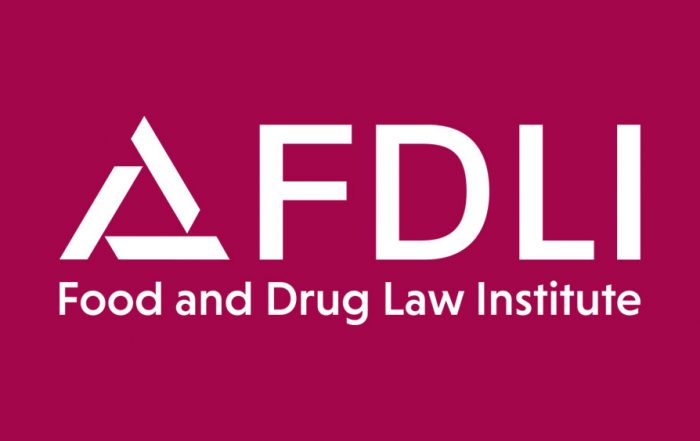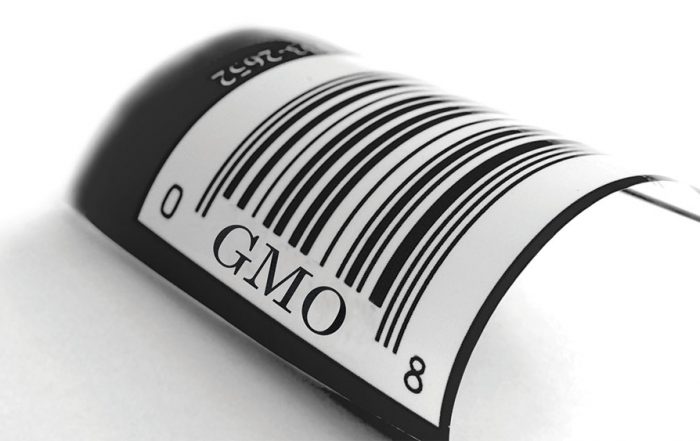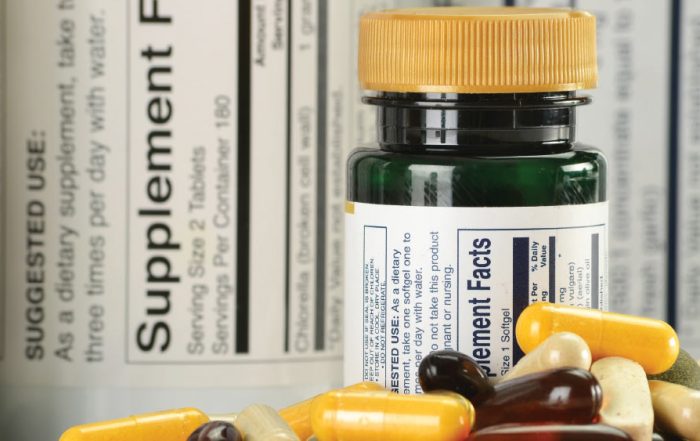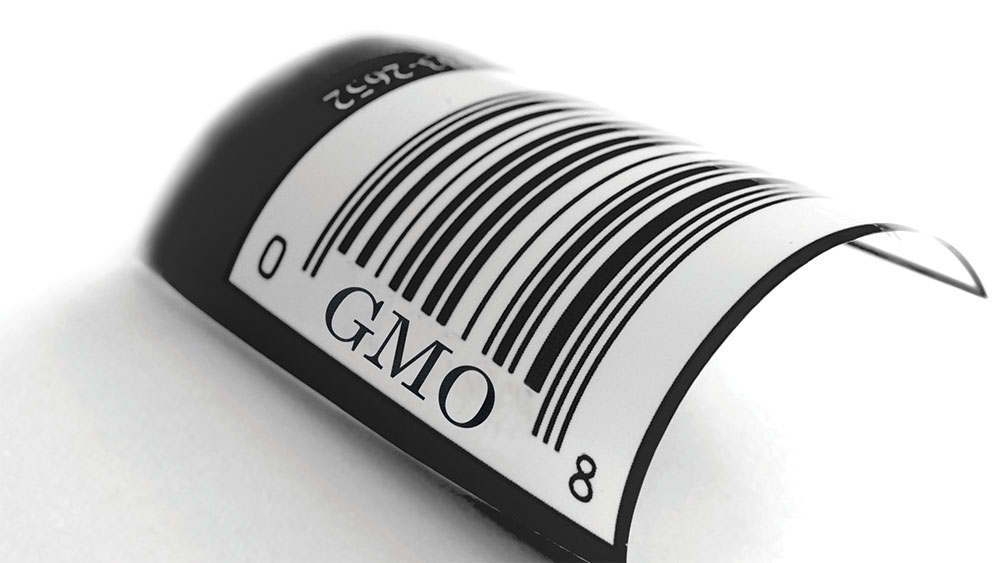
Voluntary and Mandatory Claims About Foods and Genetic Engineering
by Veronica Colas
C laims regarding the “non-GMO” status of foods have become commonplace in food labeling. New federal legislation does not define the term “non-GMO,” but requires disclosures for “bioengineered foods.” What do these terms mean and how are they regulated? This Article discusses the current and future regulation of claims regarding whether a food contains ingredients derived from genetically engineered (GE) plants—more popularly referred to as genetically modified organisms (GMO).
Background
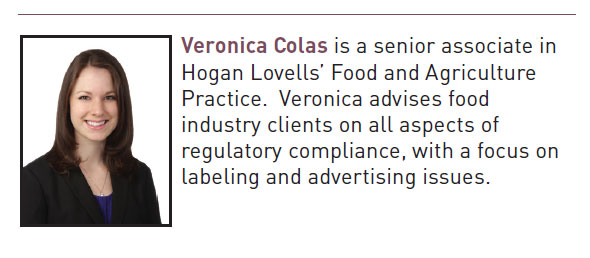 Between 2012 and 2016, at least 30 states considered laws requiring special labeling for foods with ingredients derived from GE plants. The various state bills and voter ballot initiatives differed in many ways, including the definition of genetic engineering, the specific disclosure language that must be used, and prominence requirements for such disclosures. Connecticut and Maine were the first two states to pass such laws, each with an effective date contingent upon additional states adopting similar requirements. In May 2014, Vermont became the first state to enact a “GMO labeling” requirement with an effective date that was not contingent upon additional states passing similar laws.
Between 2012 and 2016, at least 30 states considered laws requiring special labeling for foods with ingredients derived from GE plants. The various state bills and voter ballot initiatives differed in many ways, including the definition of genetic engineering, the specific disclosure language that must be used, and prominence requirements for such disclosures. Connecticut and Maine were the first two states to pass such laws, each with an effective date contingent upon additional states adopting similar requirements. In May 2014, Vermont became the first state to enact a “GMO labeling” requirement with an effective date that was not contingent upon additional states passing similar laws.
The Vermont law and its implementing regulations required certain foods to be labeled as “Produced with Genetic Engineering” (or qualified as “Partially Produced” or “May Be Produced,” as appropriate). The regulations contained a number of exemptions, including for meat and poultry products, restaurant foods, dairy products without added ingredients derived from GE plants, processing aids, and foods with small amounts of GE content (less than 0.9 percent by weight). The law provided the Vermont Attorney General with authority to impose civil penalties of $1,000 per product per day for noncompliance. Compliance with the Vermont law was required as of July 1, 2016, and many food companies began to update product labels to add the required disclosures ahead of the compliance date.
Shortly after the Vermont labeling law was passed, it was challenged on First Amendment and other grounds by the Grocery Manufacturers Association (GMA) and other trade associations. The lawsuit alleged, among other things, that the disclosure requirements violated the First Amendment by compelling manufacturers to convey a message with which they do not agree, namely, that consumers should assign significance to the fact that a product contains an ingredient derived from a GE plant.1 In April 2015, the U.S. District Court for the District of Vermont denied GMA’s motion for a preliminary injunction that would stop the Vermont law from going into effect during the litigation. The plaintiffs appealed the case to the U.S. Court of Appeals for the Second Circuit.
Meanwhile, concerned about the growing patchwork of state laws and requirements pertaining to GMO labeling, Congress pursued a legislative solution that would provide a uniform national standard for disclosures regarding foods with ingredients from GE plants. Such a standard was enacted on July 29, 2016, a few weeks after the Vermont law had become effective. The new federal law establishes a national disclosure standard for “bioengineered foods” and preempts any state or local law requirement related to the labeling or disclosure of whether a food is bioengineered (or produced using bioengineering) that is not identical to the federal law. By calling for a single, uniform national standard, the federal preemption provision avoided the potential patchwork of differing state and local laws. After the federal law was signed by President Barack Obama, the Vermont Attorney General’s Office announced that it would not be enforcing the Vermont law, and the state of Vermont and food industry plaintiffs entered into a joint stipulation to voluntarily dismiss the suit.
New Federal Law – Disclosures That a Food Is “Bioengineered”
Under the new federal law, the U.S. Department of Agriculture (USDA) is required to issue regulations to implement the federal disclosure standard by July 29, 2018. Although the statute does not specify the date on which companies must comply, it does state that small businesses—a term to be defined by USDA—are to be given an additional year to comply. Disclosures are to be required for “bioengineered foods” and “any food that may be bioengineered,” terms that USDA must define. The statute provides some detail on which foods will not be subject to the disclosure standard. These include the following:
- Foods derived from animals will not need to bear a disclosure solely because the animal consumed GE feed. For example, milk from a cow that ate corn-based feed is not considered “bioengineered” solely on this basis. A flavored milk could, however, be considered bioengineered on another basis, such as if sugar from GE sugar beets is added to sweeten the product.
- Meat, poultry, and egg products are exempt, with two important exceptions. These products will be subject to the disclosure standard if either (1) the most predominant ingredient would independently be subject to Food and Drug Administration (FDA) labeling requirements; or (2) the first most predominant ingredient is broth, stock, water, or a similar ingredient, and the second most predominant ingredient would independently be subject to FDA labeling requirements. As an example, single-ingredient raw ground beef would be exempt, while a pepperoni pizza could be subject to the standard if the first ingredient is wheat flour.
- Foods served in restaurants or other similar retail food establishments.
- Foods sold by very small businesses, a term to be defined by USDA.
Additionally, per the law’s requirement that USDA consider establishing consistency between the new disclosure standard and the USDA National Organic Program, USDA’s Agricultural Marketing Service has issued a policy memorandum stating that no certified organic products will require a disclosure under the new standard.2
The law requires USDA to determine the amount of a bioengineered substance that may be present in a food in order for the food to be considered “bioengineered.” USDA could use a standard similar to that adopted by Vermont (0.9 percent by weight) or it could adopt a different standard. USDA must also establish a process for requesting an agency determination regarding the additional factors and conditions under which a food would be considered bioengineered.
In terms of what the disclosure itself looks like, the form of the disclosure must be a text, symbol, or electronic or digital link; and the manufacturer may choose among these options. This would include scannable technology such as the SmartLabel program or a Quick Response (QR) Code. Importantly, the law does not require the text of the disclosure itself to appear on the label; this is simply one of three options that companies may choose from. This is why the law is consistently referred to as a “disclosure” standard, rather than a “labeling” standard.
The law does not allow Internet website URLs that are not embedded in the link to qualify for the disclosure. So a company could not comply simply by posting the website URL on the package. Any electronic or digital link disclosure must be of sufficient size to be easily and effectively scanned or read by a digital device. In addition, USDA must provide reasonable alternative disclosure options for food contained in small or very small packages. For small manufacturers, USDA must provide alternate disclosure options, including an option to use a telephone number along with on-package language to indicate the number provides access to additional information.
On-package language would be required to accompany electronic or digital link disclosures. The language would state, “Scan here for more food information,” or similar language reflecting changes in the technology used to access the link. The electronic or digital link must provide the bioengineering disclosure in a consistent and conspicuous manner on the first landing page that appears, and it must exclude marketing and promotional information.
Ultimately, the details of which foods must bear the disclosure, and what the disclosure itself will look like, will be ironed out in USDA’s forthcoming proposed and final regulations. The rulemaking process will be a public one, with an opportunity to submit comments to the agency.
“Non-GMO” and Similar Claims
While USDA is working to define the term “bioengineered food,” there is no such definition in place for “non-GMO” or similar claims. “Non-GMO” is not defined by regulation. In the absence of a clear definition, here is what we do know about these claims:
- “Non-GMO” can be used as a claim on certified organic foods without the need for further substantiation. This is expressly stated in the federal law.3
- For non-certified organic foods, the fact that the food is not required to bear a “bioengineered food” disclosure under the new federal standard is not necessarily sufficient to allow the food to qualify as “non-GMO.” This is also expressly stated in the federal law.4 As an example, if a food is made with dairy ingredients from cows that consumed GE feed, it is not considered “bioengineered” solely on that basis, but also may not necessarily qualify as “non-GMO.” Further evaluation would be needed to determine whether the food would qualify for a “non-GMO” claim.
- FDA has taken the view in guidance that the term “GMO-free” means that there are no detectable levels of GE content. Given the challenges in substantiating a “free” claim, the agency recommends that companies avoid this terminology.5
Beyond these points, FDA’s guidance document on Voluntary Claims Indicating Whether Foods Have or Have Not Been Derived from Genetically Engineered Plants directs companies toward recordkeeping as one appropriate way to substantiate “non-GMO” claims. The guidance states such records could include affidavits from farmers, processors, and others in the food production and distribution chain. For example, a farm could certify that it does not plant bioengineered seeds and keep records of handling practices for that crop to substantiate that the crop was not bioengineered. Similarly, a distributor could certify that it only purchases foods from farmers that do not plant bioengineered seeds and keep records to substantiate such certification.
Another option is to have this type of documentation, along with the finished product formulation and label, reviewed by a third-party verification body, such as the Non-GMO Project or NSF International. Each of these groups verifies products according to its respective standards. In fact, when reviewing “non-GMO” claims, USDA’s Food Safety and Inspection Service (FSIS) requires that either (1) the product is certified organic; or (2) a third-party organization has verified the claim and the verifying organization’s website is provided on the label. While there are two procedural routes available to support a “non-GMO” claim for a non-certified organic food—internal document review or third-party verification—the substantive criteria to support a “non-GMO” claim are less clear. This is an area where food companies should proceed carefully, consult legal counsel, and pay close attention to the evolving regulatory landscape.
Conclusion
USDA is actively engaged in defining the scope of “bioengineered foods” that will require a disclosure under the new federal law. The agency will accept public comments as it implements the new standard. The term “non-GMO” remains undefined but can be used appropriately with careful documentation and consideration as to the criteria for such a claim.
- Grocery Manufacturers Association et al. v. Sorrell, Case No. 5:14-cv-00117 (D. Vt. 2014).
- Memorandum from Elanor Starmer, AMS Administrator, to AMS Deputy Administrators, Re: Consistency between Bioengineered Disclosure and the National Organic Program, Sept. 19, 2016, https://www.ams.usda.gov/sites/default/files/media/PolicyMemoGMODisclosure-NOPConsistency.pdf.
- National Bioengineered Food Disclosure Standard, Pub. L. 114-216, § 2, 130 Stat. 838 (2016), codified at 7 U.S.C. § 6524.
- Id. § 1, codified at 7 U.S.C. 1639c(c).
- FDA Guidance for Industry: Voluntary Claims Indicating Whether Foods Have or Have Not Been Derived from Genetically Engineered Plants (November 2015), http://www.fda.gov/Food/GuidanceRegulation/GuidanceDocumentsRegulatoryInformation/LabelingNutrition/ucm059098.htm.
Update Magazine
January/February 2017

